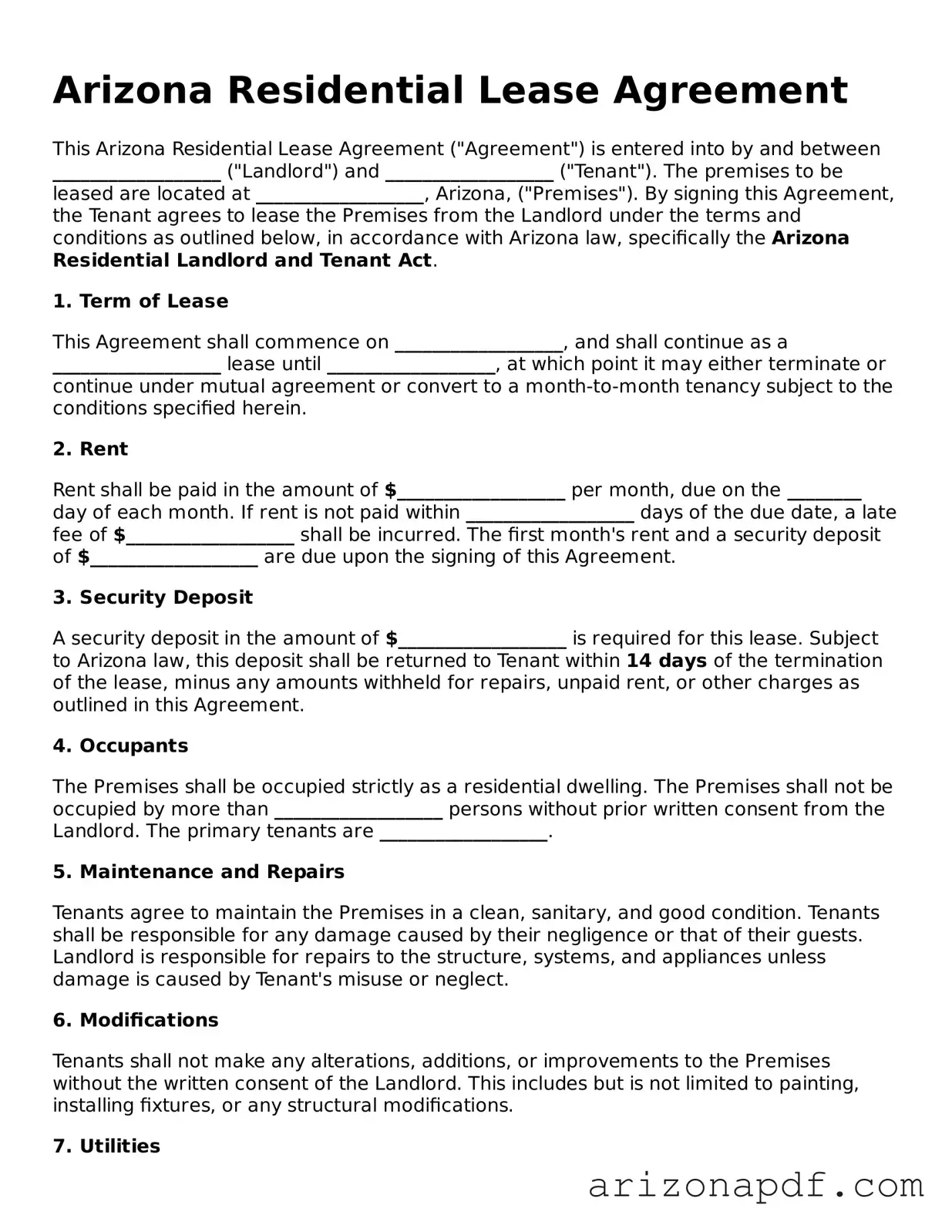Arizona Residential Lease Agreement
This Arizona Residential Lease Agreement ("Agreement") is entered into by and between __________________ ("Landlord") and __________________ ("Tenant"). The premises to be leased are located at __________________, Arizona, ("Premises"). By signing this Agreement, the Tenant agrees to lease the Premises from the Landlord under the terms and conditions as outlined below, in accordance with Arizona law, specifically the Arizona Residential Landlord and Tenant Act.
1. Term of Lease
This Agreement shall commence on __________________, and shall continue as a __________________ lease until __________________, at which point it may either terminate or continue under mutual agreement or convert to a month-to-month tenancy subject to the conditions specified herein.
2. Rent
Rent shall be paid in the amount of $__________________ per month, due on the ________ day of each month. If rent is not paid within __________________ days of the due date, a late fee of $__________________ shall be incurred. The first month's rent and a security deposit of $__________________ are due upon the signing of this Agreement.
3. Security Deposit
A security deposit in the amount of $__________________ is required for this lease. Subject to Arizona law, this deposit shall be returned to Tenant within 14 days of the termination of the lease, minus any amounts withheld for repairs, unpaid rent, or other charges as outlined in this Agreement.
4. Occupants
The Premises shall be occupied strictly as a residential dwelling. The Premises shall not be occupied by more than __________________ persons without prior written consent from the Landlord. The primary tenants are __________________.
5. Maintenance and Repairs
Tenants agree to maintain the Premises in a clean, sanitary, and good condition. Tenants shall be responsible for any damage caused by their negligence or that of their guests. Landlord is responsible for repairs to the structure, systems, and appliances unless damage is caused by Tenant's misuse or neglect.
6. Modifications
Tenants shall not make any alterations, additions, or improvements to the Premises without the written consent of the Landlord. This includes but is not limited to painting, installing fixtures, or any structural modifications.
7. Utilities
Tenants shall be responsible for all utility charges, except __________________, which shall be paid by the Landlord. Tenants agree to place utility accounts in their name from the commencement of the lease.
8. Governing Law
This Agreement shall be governed by, and construed in accordance with, the laws of the State of Arizona. Any disputes arising under this Agreement shall be adjudicated in the state or federal courts located in Arizona.
9. Entire Agreement
This document constitutes the entire Agreement between the Landlord and Tenant concerning the rental of the Premises. No oral agreements have been entered into, and all modifications or notices shall be in writing to be valid.
IN WITNESS WHEREOF, the parties have executed this Arizona Residential Lease Agreement on the date first listed above.
Landlord's Signature: ___________________________________ Date: _________________
Tenant's Signature: ___________________________________ Date: _________________
Tenant's Signature: ___________________________________ Date: _________________
